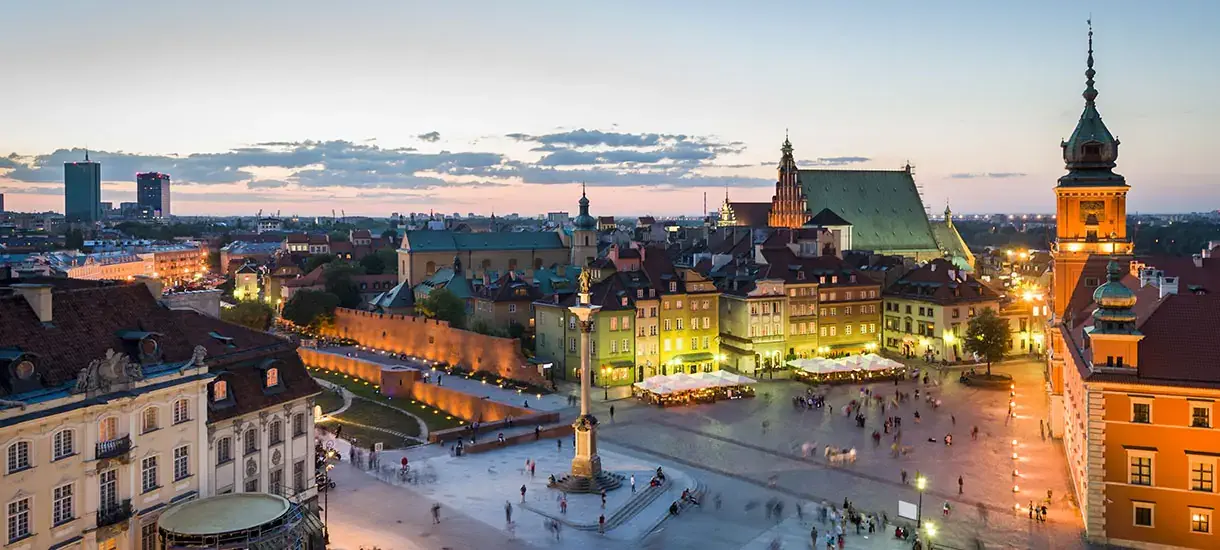It is often said that the best way to learn about a country’s history and culture is through its food, and you can’t find any better than in Italy.
The Italian Street food market bursts with many dishes, often from humble beginnings but with flavors that will blow your mind, not to mention delight your palate.
The street vendors will enthusiastically engage in conversation and proudly tell you about their dishes passed down for generations.
Italian street food

Although many of these dishes can be found anywhere in the country, most of them have regional origins, where they are fiercely guarded and served with pride. This list is by no means exhaustive, but we have picked the most popular regions with authentic and often unique dishes not to be missed whilst exploring Italy. There is no better way to taste a dish than in its place of origin.
Sicily

Sicily is the largest island in the Mediterranean and boasts diverse ethnic groups due to its location as a trading port. Though once regarded as the poorest region in Italy, its rich history is reflected in its cuisine, making it one of the best regions to visit when it comes to street food.
Arancini
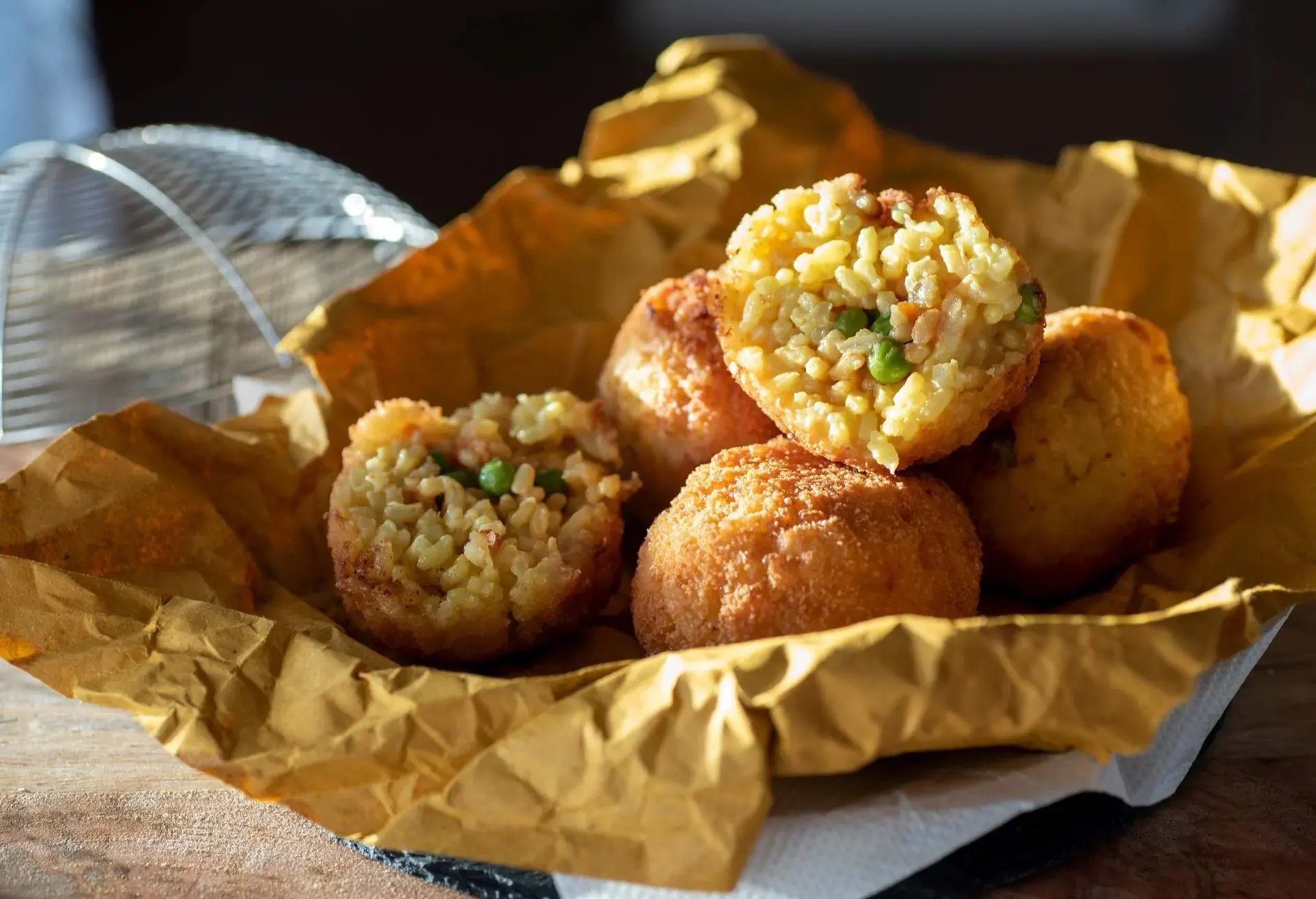
An excellent example of this cultural diversity is reflected in arancini. Meaning’ little oranges’, which is precisely what these delicious crunchy morsels look like, arancini is a dish thought to have Arabian influences from the 9th century.
Cooked rice is stuffed with cheese, peas, saffron, and minced meat, coated with breadcrumbs, and finally deep-fried to create a crunchy outside with a soft fluffy interior. You can have it on its own or dip it into an arrabbiata sauce (a spicy tomato sauce) to elevate it to another level. Rome has its very own variation of this.
Scaccia

Nothing is more tempting than cheese and bread, and no dish combines these two ingredients more brilliantly than Scaccia. With origins from Ragusa, Scaccia has become a permanent and popular fixture in Sicilian kitchens and street corners.
Thin layers of pizza dough are folded several times and stuffed with a choice of ricotta and onion, cheese and tomato or even tomato and eggplant, depending on the region and, of course, season and then baked. You could say it is a kind of lasagne bread.
Sfincione

Of course, this list would not be authentic if it didn’t feature pizza in some form or other, and what better dish to do the honors than Sfincione, the king of Sicilian Street food. Tradition has it that it was created by nuns from a monastery in Palermo. It is a kind of focaccia, fluffy and crisp, topped with tomatoes, anchovies, oregano, and authentic Sicilian sheep’s cheese. A dish that, without the anchovies, even a vegetarian can enjoy.
Sgagliozze
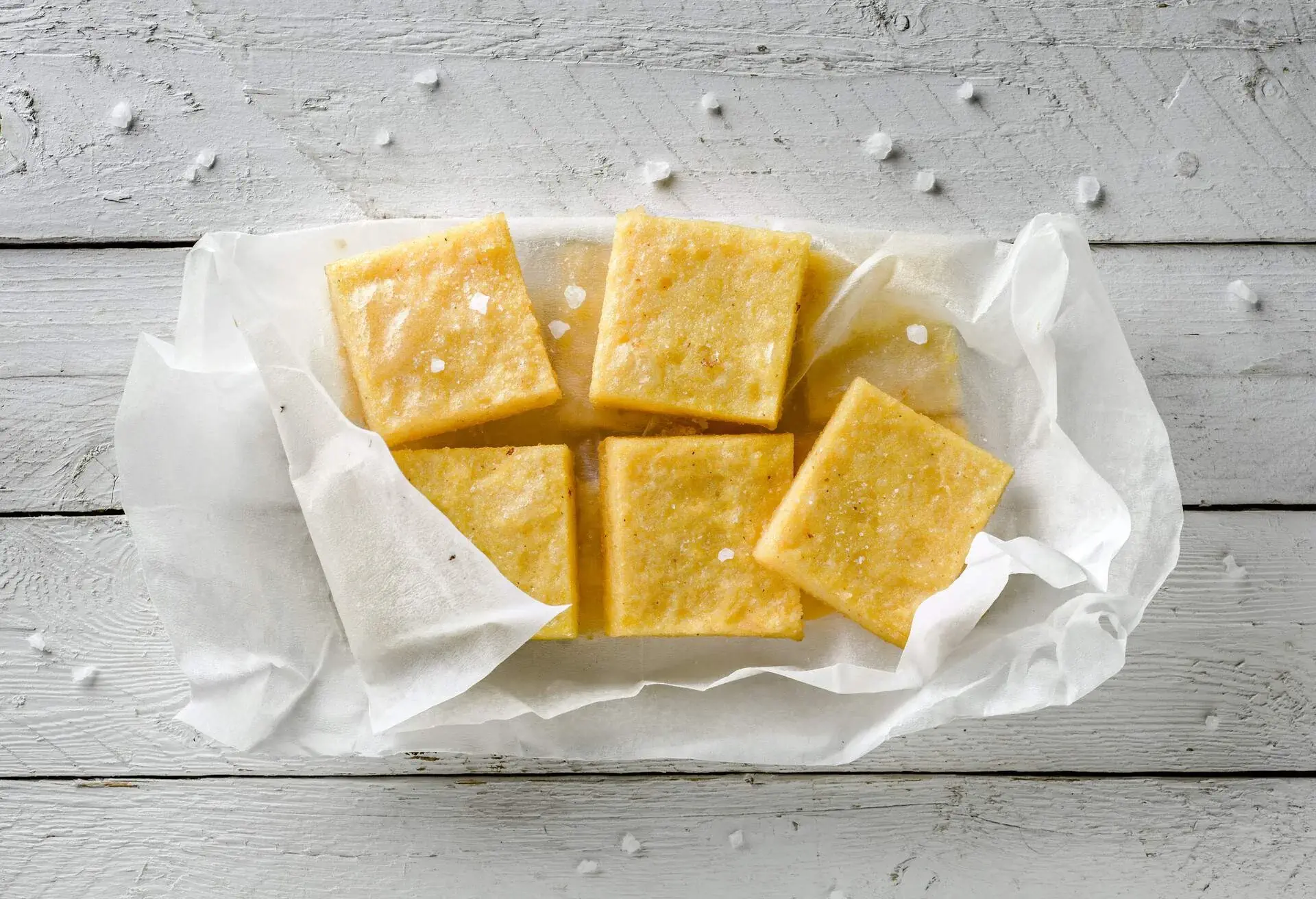
When it comes to mingling with locals, there’s no better place than at St Nicholas Cathedral in the UNESCO world heritage site of Noto, Sicily. After mass, the locals will often indulge in Sgagliozze, a square or rectangle of fried polenta sprinkled with rosemary. A crunchy morsel bursting with flavor makes for a true-life experience.
Cannoli

For the sweet-toothed person, it doesn’t get better than Cannoli. A tube-shaped sweet pastry dough fried and then filled with creamy ricotta cheese makes for a delicious snack worth its weight in flavors. This is another dish with Arabian origins.
Made specifically for festivities before lent, it was thought to symbolize fertility. Different variations of it can be found throughout Italy. In Naples, it’s finished off with candied lemon; there are also variations with chocolate chips.
Gelato brioche
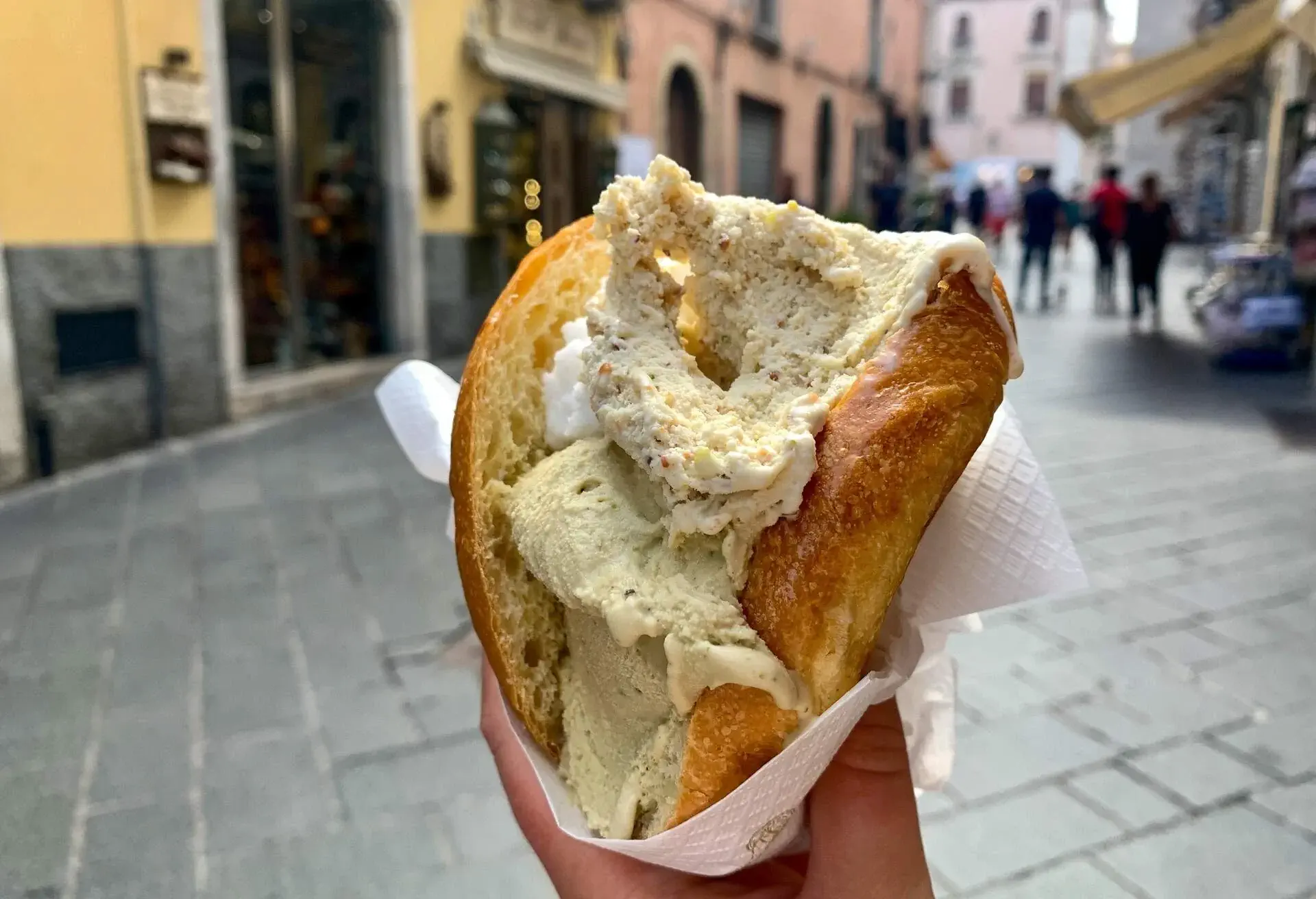
Italians do breakfast their own way, as demonstrated by gelato brioche, probably the mother of all ice cream sandwiches. We obviously couldn’t do Italy and not mention gelato, but not just any gelato. Who would have thought that soggy bread could taste so good? A sweet-brioche bun is stuffed with a scoop or two of your choice of gelato; this then soaks into the bread to leave the most delicious gooey mess you’ll ever enjoy eating.
Although found almost everywhere in Italy, it’s thought to have originated in Sicily. This is sure to start your day off on the right foot.
Rome
When visiting the Lazio region, there’s only one obvious place to go for its street food; the city that personifies la dolce vita: Rome. It was recently voted among the Top 20 Street Food Cities worldwide, not surprising given its rich history dating back millennia. Let’s explore some of the must-have dishes of this vibrant city.
Arrosticini
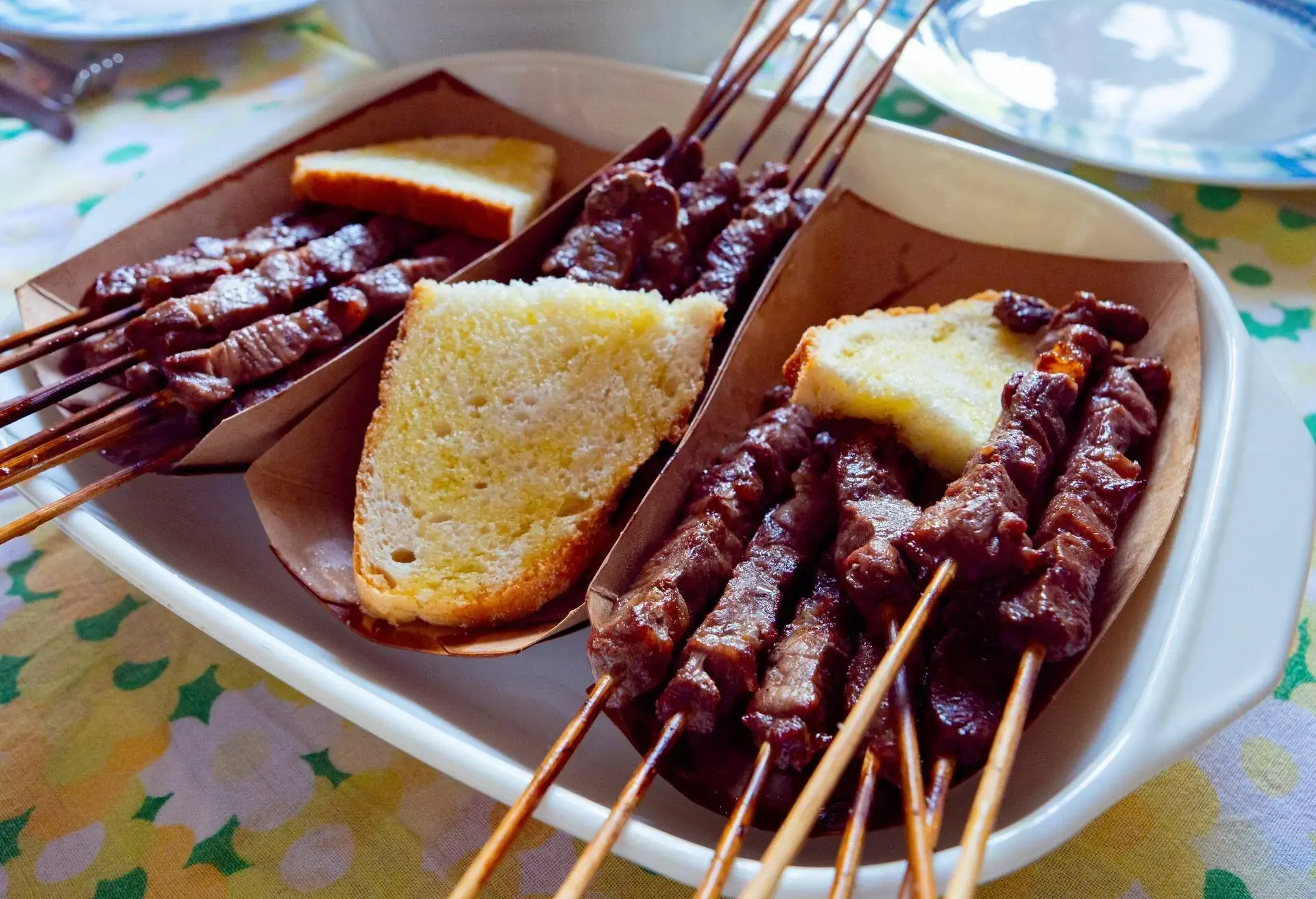
If ever there was a dish that represented humble beginnings, then arrosticini is it. With its origins in the mountains of Abruzzo, where it is said shepherds would grill sheep’s meat on skewers over charcoal whilst out herding, this dish has become quite popular on the streets of Rome. Now it’s found in the form of either sheep, lamb, or goat meat on skewers (think shish kebab Roman style), grilled on charcoal and mixed with chunks of fat to make it more succulent. Simplicity at its most brilliant.
Panino Con Porchetta
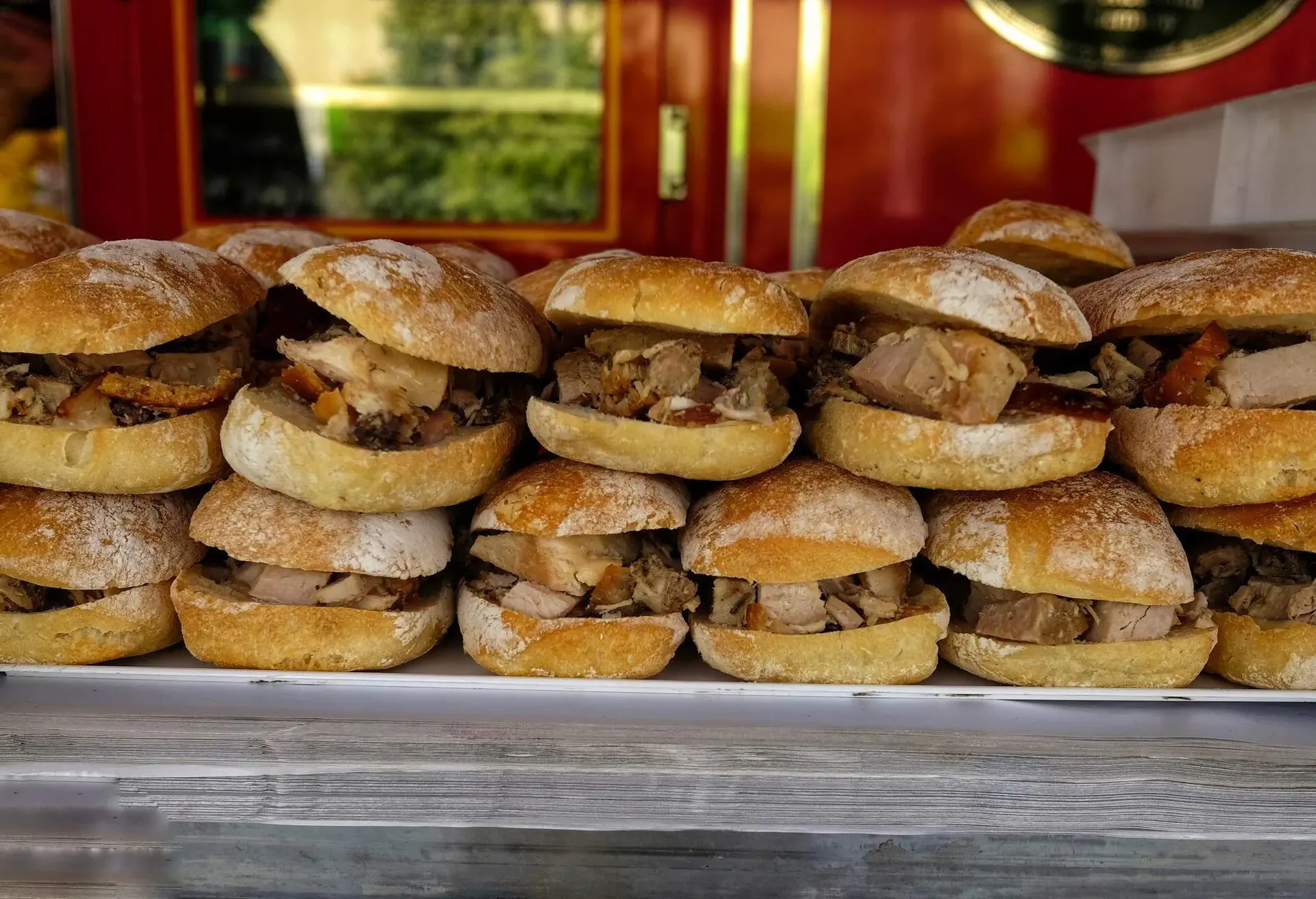
We talked about the simplicity of Italian food, and this sandwich, yes sandwich, will blow you away. Found in Tuscany, Lazio and Abruzza, Panino Con Porchetta is one of central Italy’s most common street foods. Deboned pork meat is stuffed with salt and sometimes herbs before being slowly roasted on a wood fire, leaving it incredibly succulent and tender. The pork is then thinly sliced and either eaten on its own, or you can have it served on crusty bread, creating an epic sandwich. You can thank us later.
Pizza al taglio
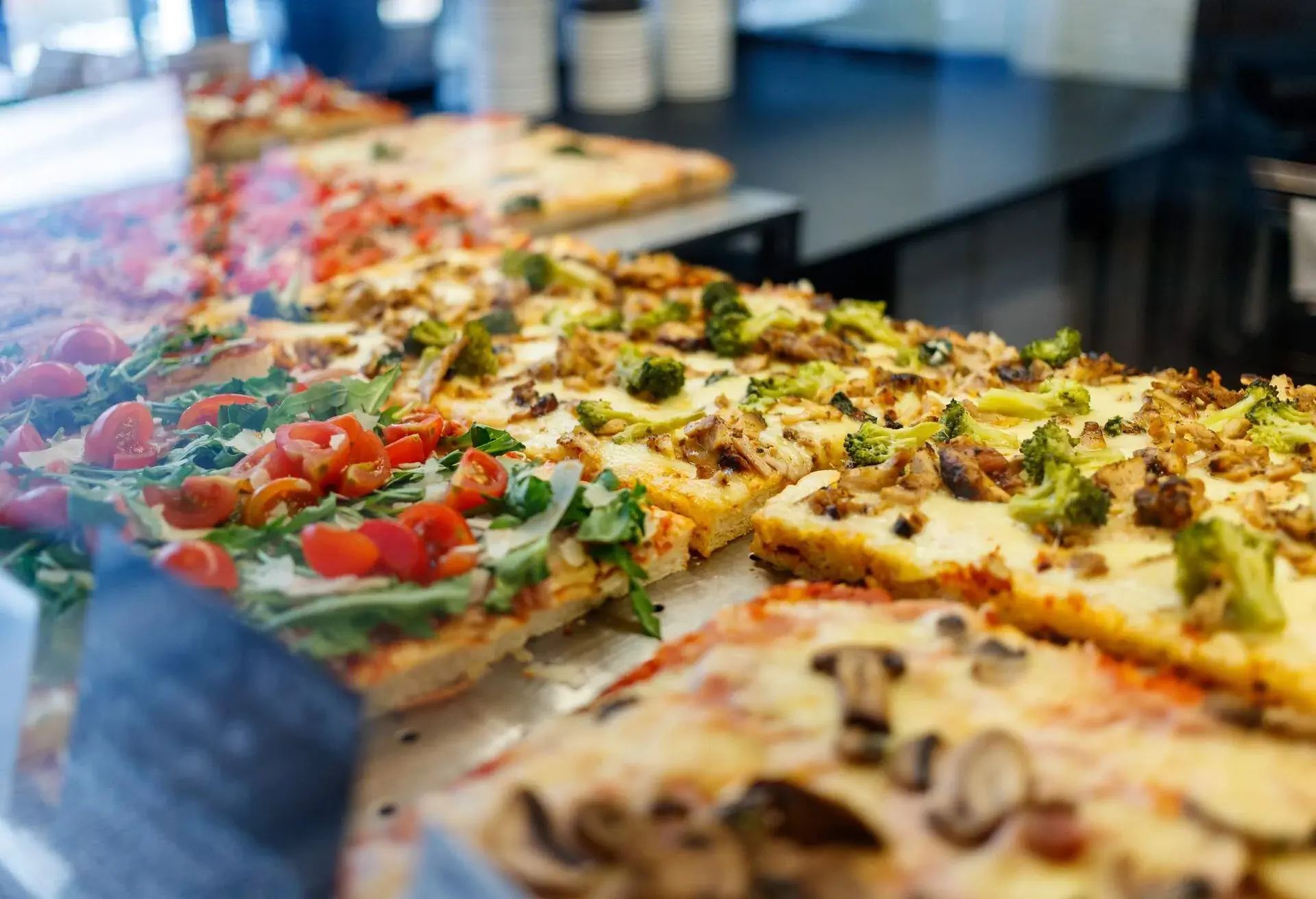
Of course, as we are in Rome, we have to mention the most quintessential Italian street food: pizza. Not just any pizza, but the mother of all pizzas, pizza al taglio. Pizza al taglio is thought to date back to the 1950s, and although it has found its way all over Italy, Rome is its home. It is a baked, thin-crust pizza that comes in either a square or rectangular shape and is sold by weight.
Suppli
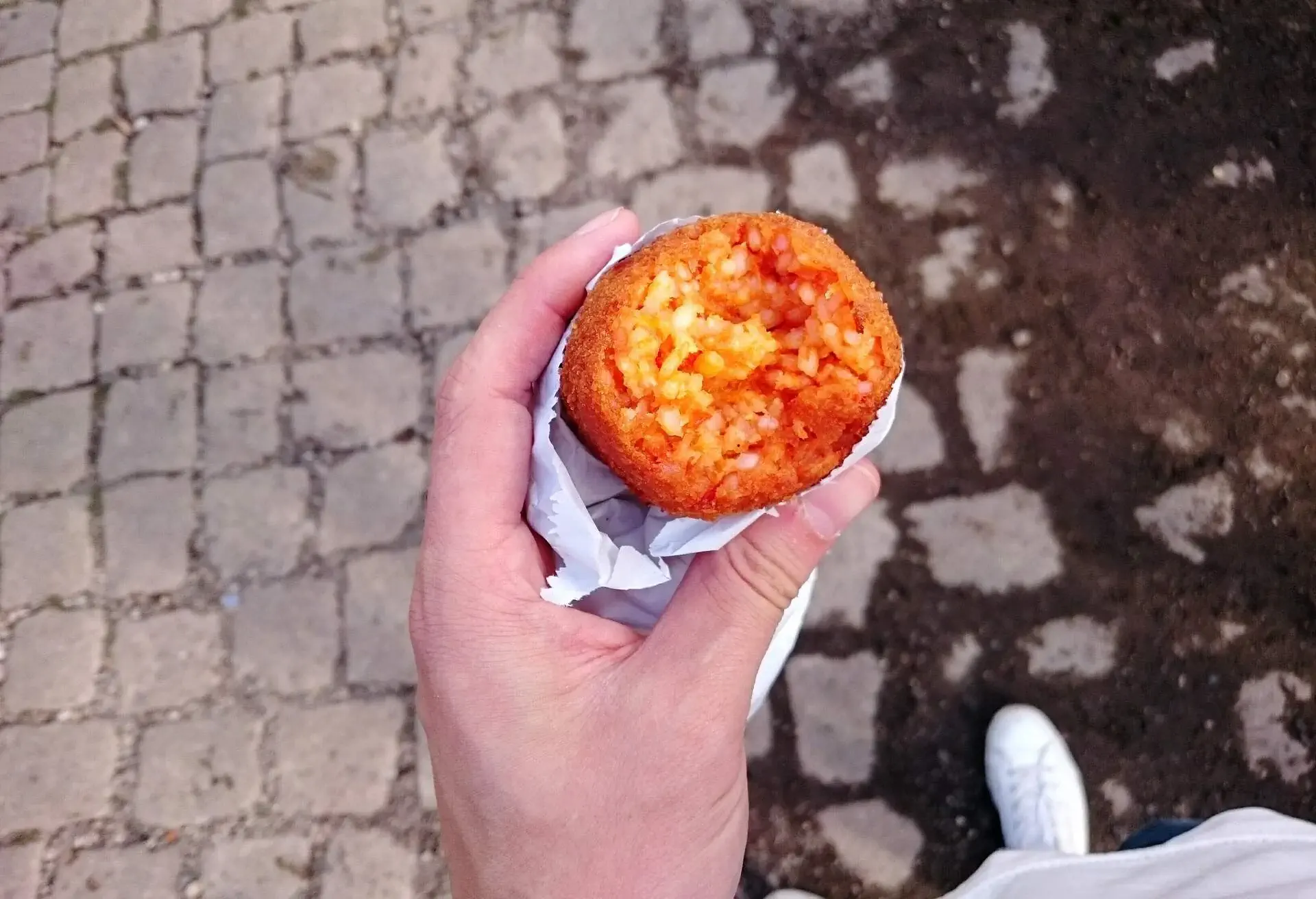
Suppli could be called a distant cousin of the arancini from Sicily and is another popular dish on the streets of Rome. It’s thought to date back to the 1800s, and like the arancini, it’s a deep-fried rice ball, but that’s where the similarities end. The Romans stuff theirs with that ever-so-delicious and stringy cheese, mozzarella (of course).
Naples

Another region worth exploring is Campania, home to 10 of Italy’s 58 UNESCO sites; we’ll concentrate mainly on Naples. Neapolitan history was greatly influenced by Greek settlers as early as 2000 BC. Local culture stipulates that the day starts with caffe e cornetto, the Italian equivalent to a croissant and a cup of coffee.
Cuoppo Napoletano
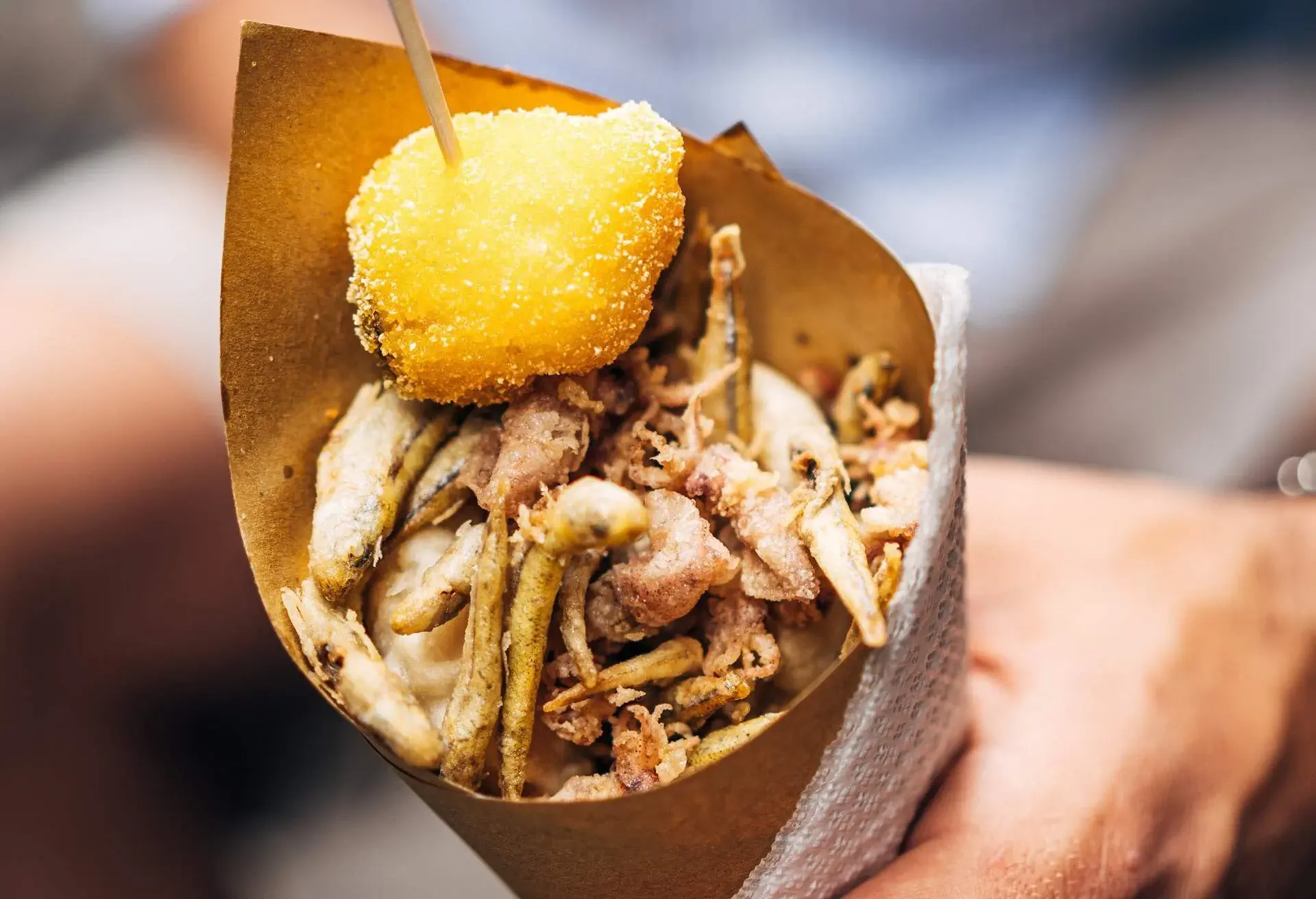
Cuoppo means cup, and you will not find a cup more laden with yummy vegetarian-friendly goodies than the Cuoppo Napoletano. The cup (a cone-shaped paper) comes filled with fried morsels such as mozzarella, dough balls, and potato croquettes. For non-vegetarians, there is a choice of fish and meat available, perfect for strolling around the streets of Naples.
Zeppole

Although found on almost every street corner in Italy, Zeppole is thought to have originated from Naples. In its simplest form, as found here, a deep-fried ball of dough is lightly topped with powdered sugar that melts to create a glaze. They now come stuffed with jelly, custard, cream, or even chocolate.
Sfogliatelle
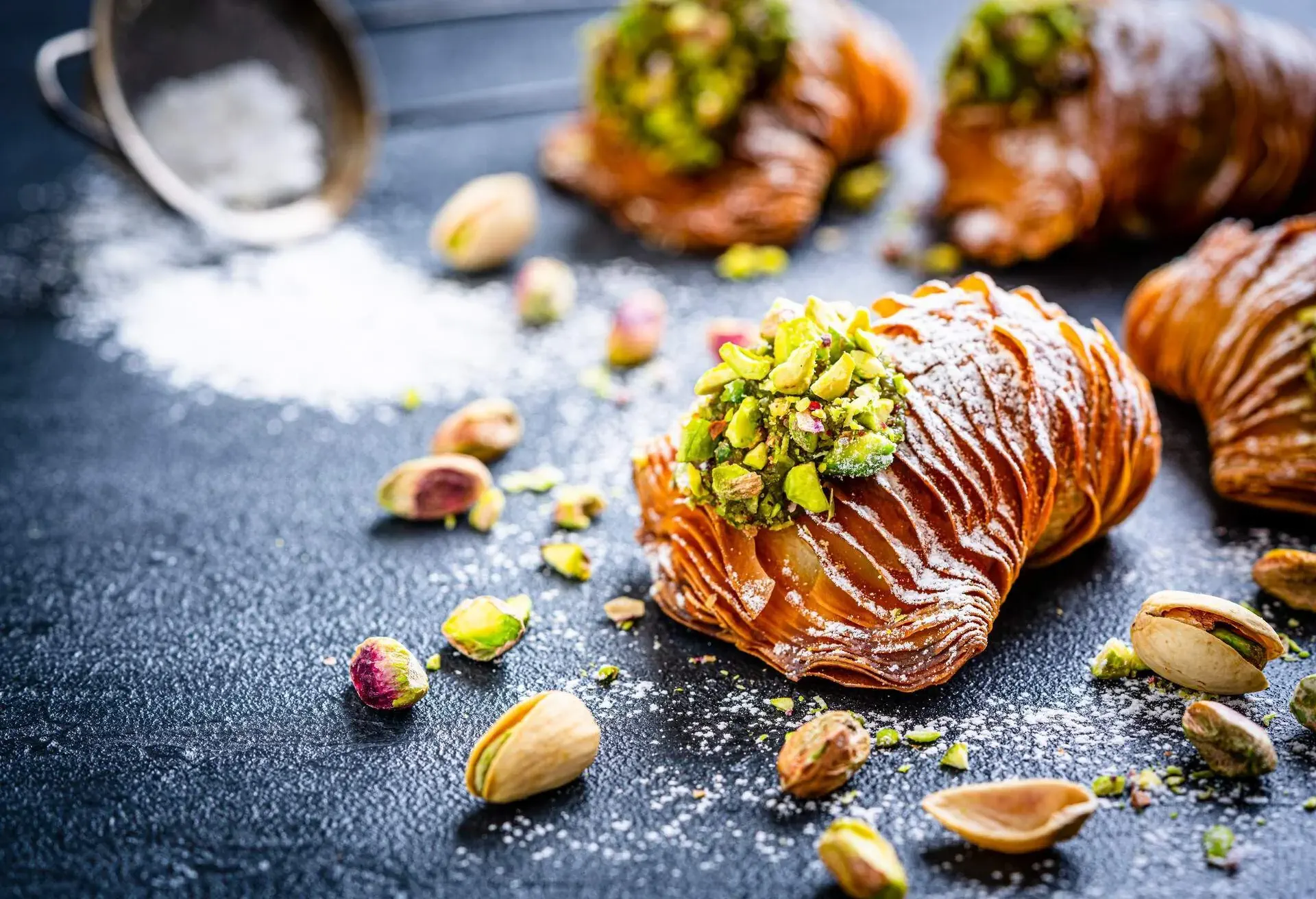
We conclude with Sfogliatelle. Thought to have first been created by a nun from Salerno in the 17th century, it was later acquired by a pastry chef from Naples, who gave it its current clam shape. Witnessing this wonder being made is a spectacle in itself. If that wasn’t enough, you will be rewarded with a hot, flaky pastry bursting with the flavors of ricotta, almond paste, and candied lemon.





